When the bank becomes a museum. Michele Coppola, director of the Galleries of Italy, speaks.
In recent decades, Intesa Sanpaolo has created a complex cultural system that aims to promote art and culture in our country. Progetto Cultura - this is the name of the project - includes four museums located in historic palaces, the Gallerie d’Italia, where a conspicuous selection of the more than 35,000 works belonging to the Group’s art heritage, from archaeology to contemporary art, is on display to the public: Milan is home to the collections of the 19th century and the Fondazione Cariplo, as well as a selection of 20th-century works; in Naples the Martyrdom of St. Ursula, a masterpiece by Caravaggio, stands out, along with pieces from the southern area dated between the 17th and early 20th centuries, the collection of Attic and Magna Graecia ceramics and a nucleus of works from the second half of the 20th century. Vicenza features eighteenth-century Venetian art and a collection of Russian icons, one of the largest in the West; Turin-a venue dedicated to photography and the digital world in which the Publifoto Archive with its 7 million snapshots from the 1930s to the 1990s is housed-exhibits an important set of paintings and furnishings from the fourteenth to the eighteenth century, including the nine seventeenth-century canvases from the now-destroyed Compagnia di San Paolo Oratory. Alongside the permanent collections, the Gallerie d’Italia offers temporary exhibitions based on original scientific projects and made possible thanks to loans and exchanges with important national and international museum institutions. In addition to these venues are the Galleria di Palazzo degli Alberti in Prato, opened in 2022 by Intesa Sanpaolo to allow the enjoyment of a heritage that is identifiable to the city, and the Casa Museo dell’Antiquariato Ivan Bruschi in Arezzo, which became part of the bank’s artistic heritage after joining the Ubi Banca group. Also part of Progetto Cultura is the Restituzioni program, which, since 1989, has cared for and supported the restoration of works identified in collaboration with ministerial protection bodies; the 20th edition of the project, which to date has enabled the recovery of more than 2,000 masterpieces from Italy’s artistic heritage, is in preparation. Further ramifications of Progetto Cultura include the Historical Archives, which manages and enhances the archival assets of the more than 600 banks merged into the group; Gallerie d’Italia Academy, which dedicates specialization initiatives to young people, such as the advanced training course in “Management of artistic-cultural heritage and corporate collections”; and the Workshop of Ideas, which offers further qualifying training opportunities in the art world. There is no shortage of publishing activities, musical projects and the vast network of partnerships through which Intesa Sanpaolo supports important institutions, museums and cultural initiatives in Italy.
The protagonist of this grand gear is Michele Coppola, who, within Intesa Sanpaolo’s Art, Culture and Historical Heritage Department, serves as Executive Director and General Manager of the Gallerie d’Italia. We interviewed him to let him tell us in detail about the bank’s multi-year plan, which is unique in the Italian scenario and beyond.
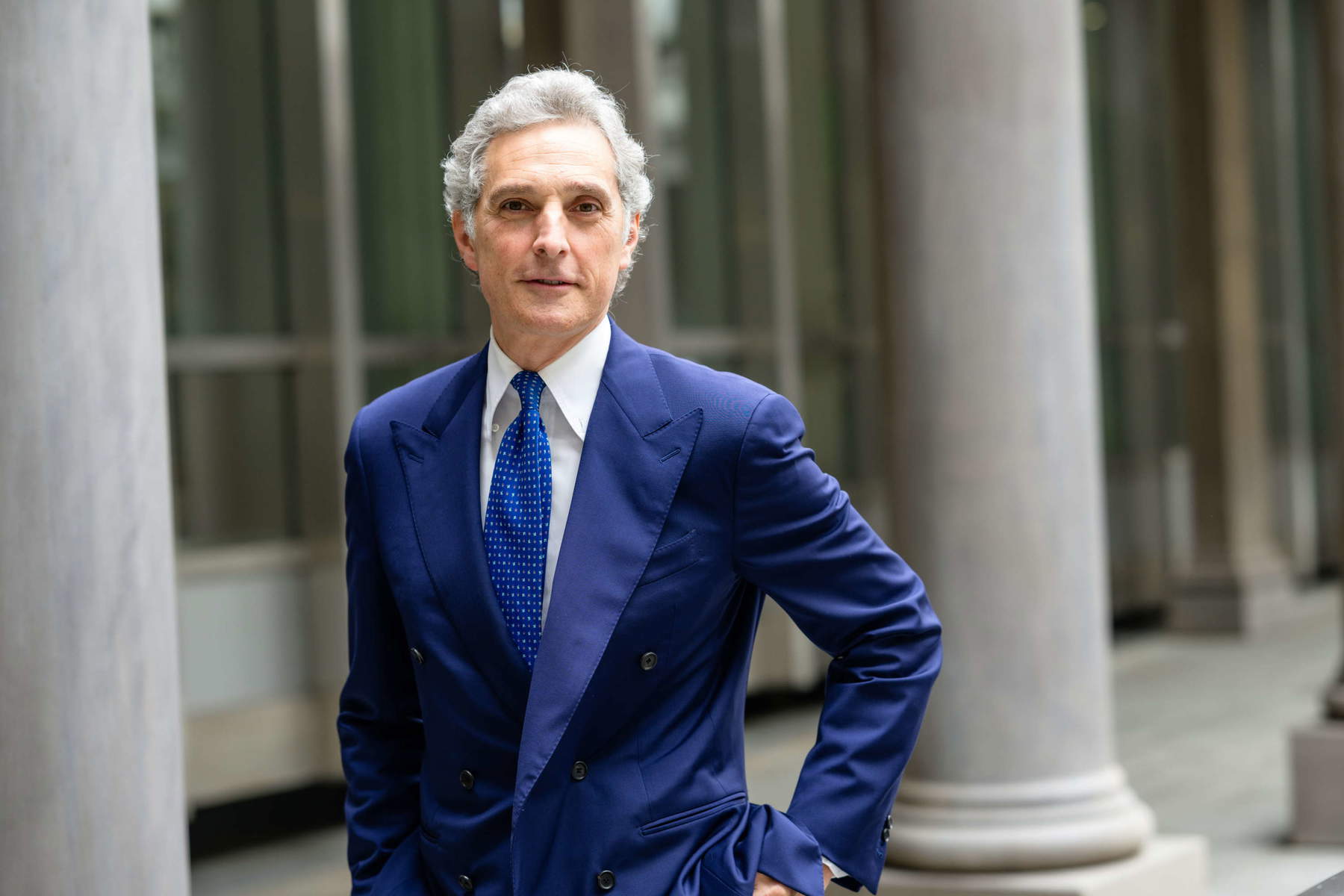
MS. What are the reasons that drive a bank to acquire and enhance artistic assets?
MC. The answer is almost easy: there is a deep connection between the banking world, art and culture. It is a relationship that is rooted in history, since the time of the Italian Renaissance, so it is inseparable and over the centuries it has been confirmed numerous times. For example, the Gallerie d’Italia in Milan two years ago hosted the exhibition Dai Medici ai Rothschild. Patrons, Collectors, Philanthropists dedicated to this kind of relationship and which focused on those profiles of bankers, not only Italian, who turned their collections into museums open to the public. Today such a link continues to be alive, strong and I would say almost necessary, because very few things like art and culture are able, in an instant, to convey messages of belonging, shared values and future prospects. And if a private entity such as a bank wants to question what it has been, what it is, and what it will be, it cannot ignore art.
However, not all banks have such a mission. Many banks own works of art, but few make them available to the public.
This discourse is interesting because it allows us to emphasize the differences: in a free market logic, each one decides to present itself and tell its story to its community, its customers and its stakeholders in the way it considers best. Ours is an identity choice: moreover, we have no evidence of the existence, in Europe, of a cultural project as broad and extensive as that of Intesa Sanpaolo.
Before talking about the museums of Gallerie d’Italia, can you reveal how much the historical-artistic heritage owned by Intesa Sanpaolo is worth in economic terms?
For a bank, reasoning in terms of numbers is obviously a habit, and if we talk about assets, I would like to provide an overall figure of assets under management, that is, the economic value of the art collections that come under the management of Intesa Sanpaolo’s Art, Culture and Historical Assets Department, plus the share of the historical buildings that house the Gallerie d’Italia: overall, the value is around 1 billion euros. In particular, the real estate assets are worth more than 250 million, about a quarter; the remaining part includes all the works of art owned by us or attributable to our management activities.
What, in your opinion, are the most valuable and distinctive pieces of your collections?
Without being able to give precise figures that are always conditioned by the historical moment, among the most important works in our collection are Caravaggio’s Martyrdom of St. Ursula, Andy Warhol’s Triple Elvis from the Agrati Collection, Spatial Concept. The Moon in Venice by Lucio Fontana and finally the painting Abstraktes Bild by Gerard Richter, so we also name a living artist.
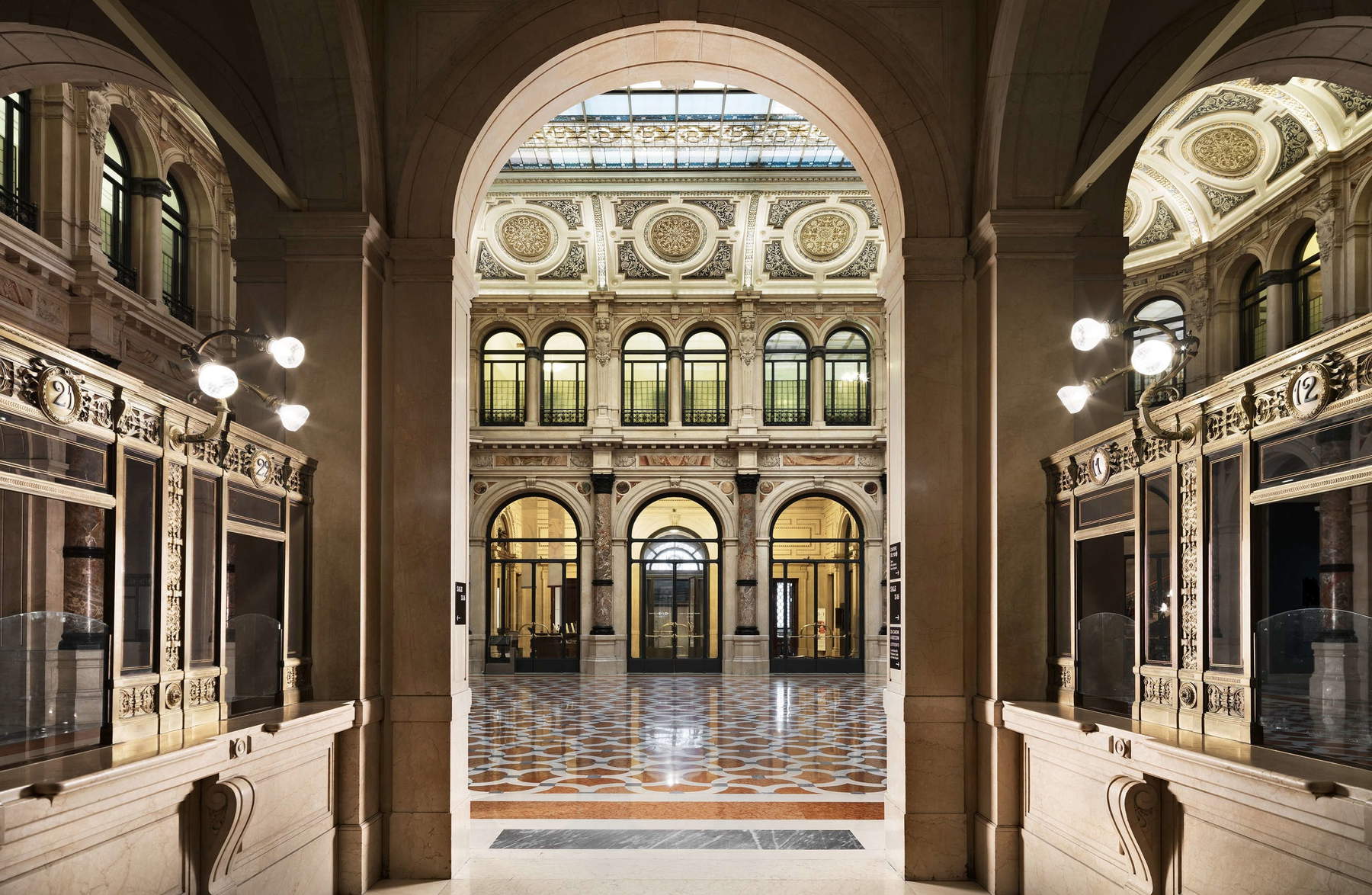
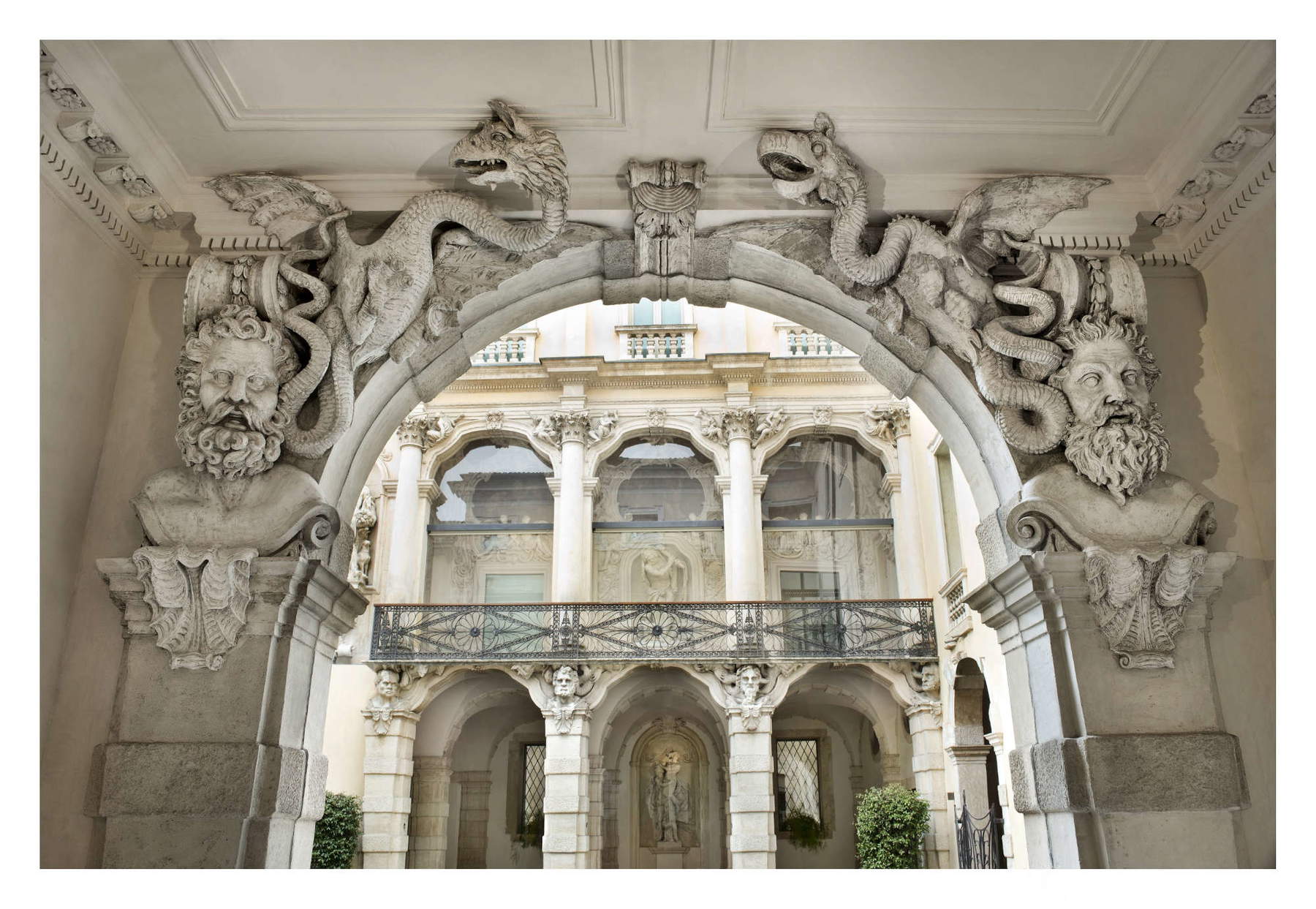
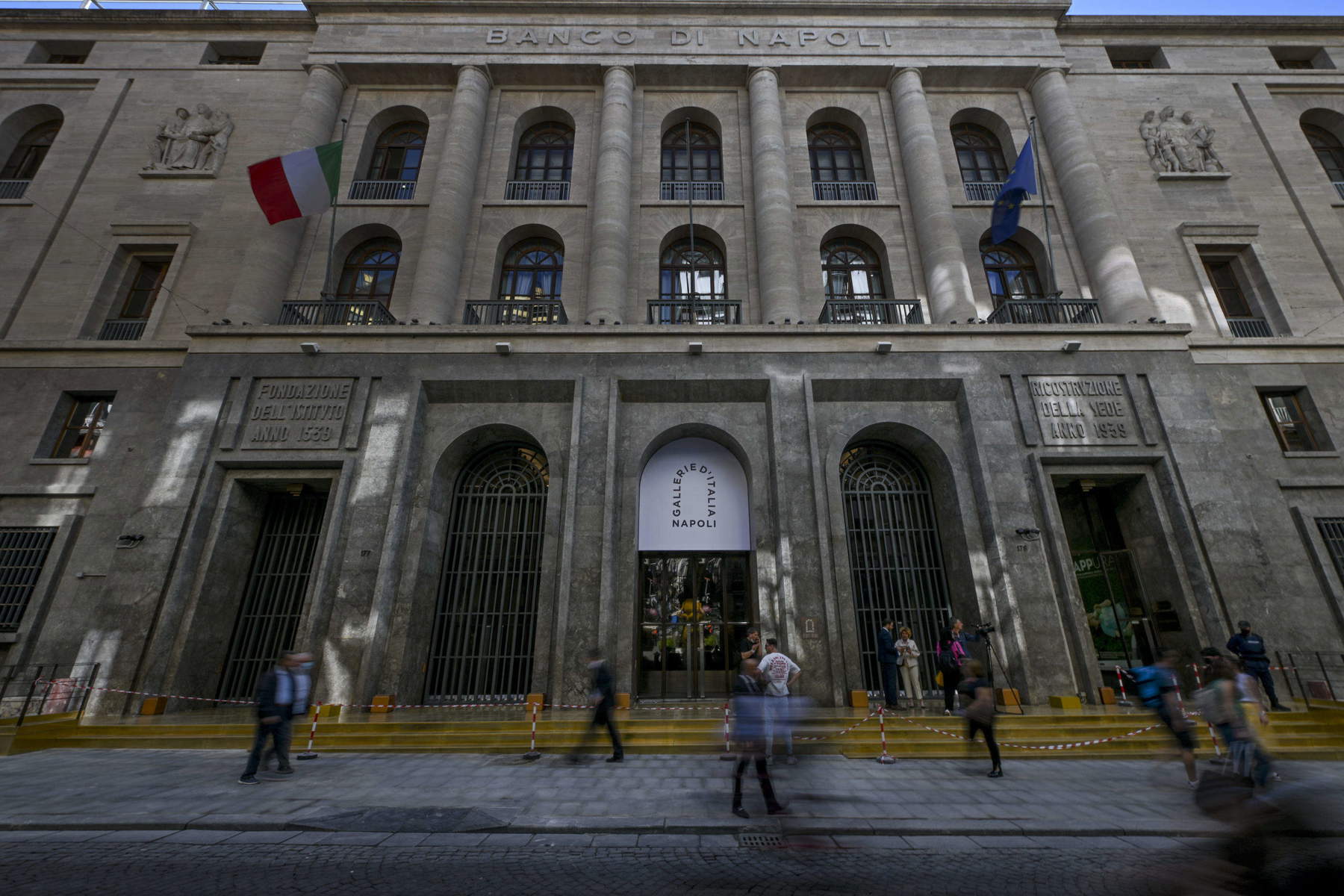
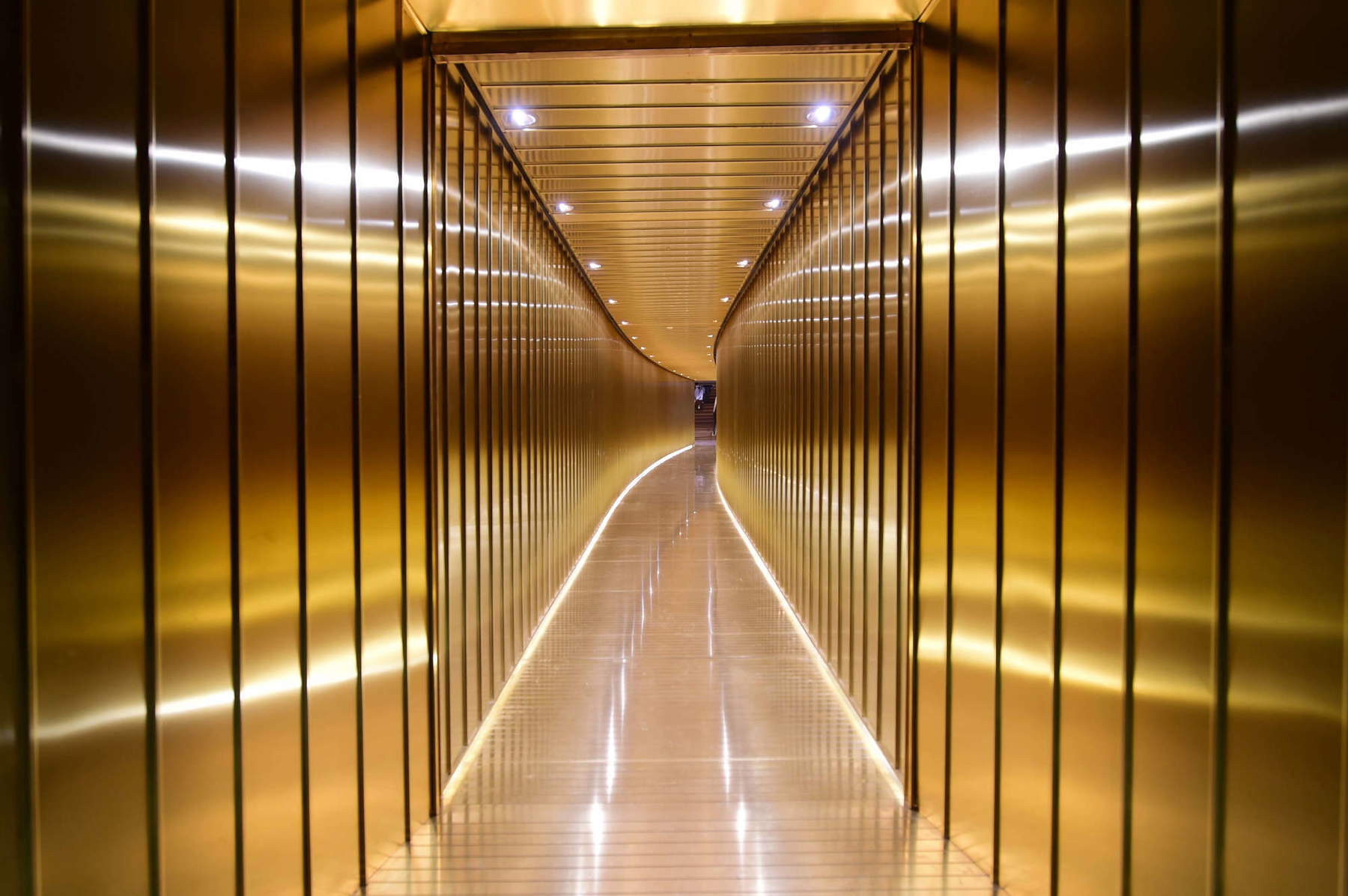
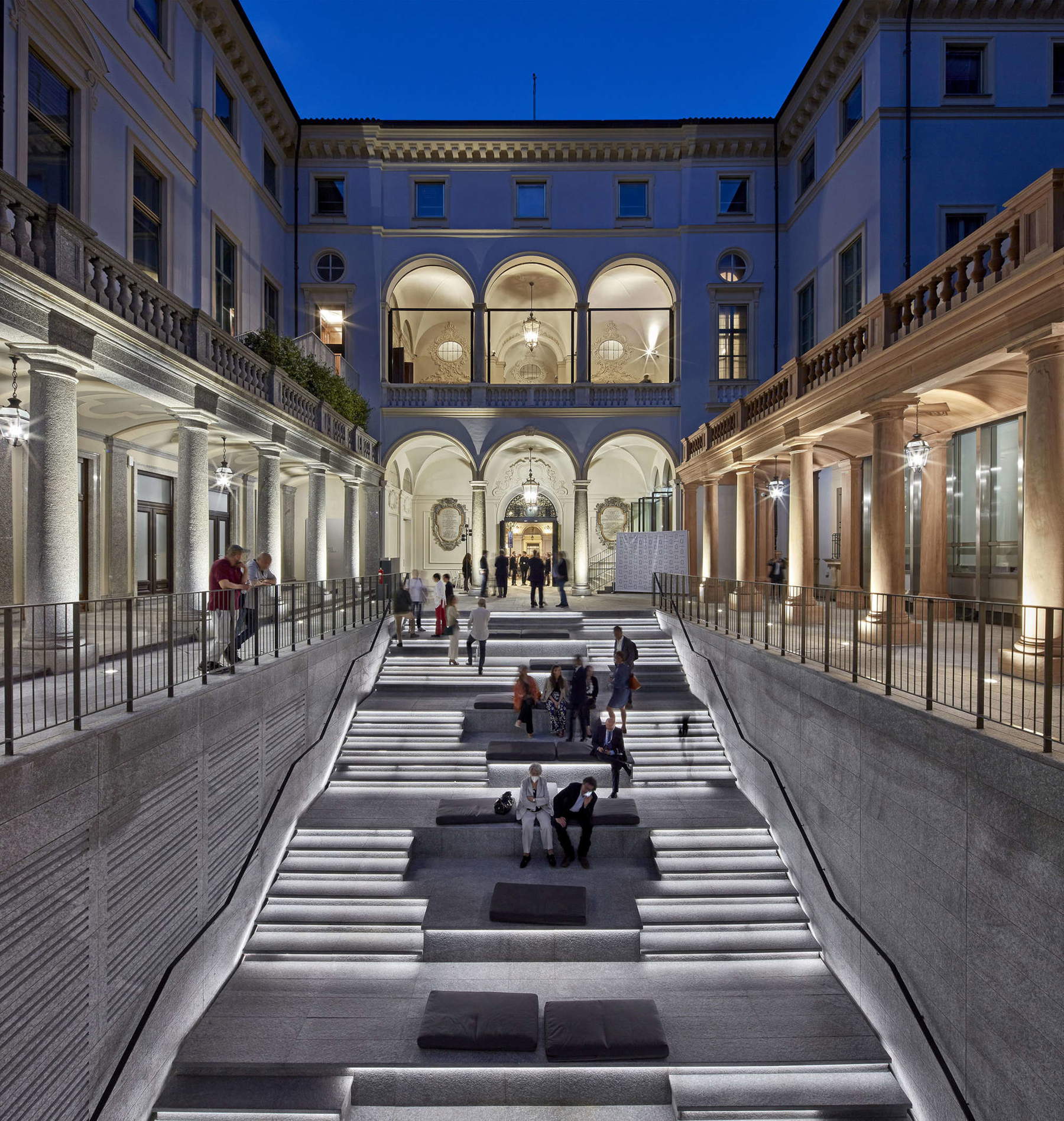
How many people visited your museums in 2023?
We use the expression “one museum, four venues,” and we don’t distinguish between Milan, Naples, Turin and Vicenza: each museum is like a side of a palace to which we devote equal attention, determination and passion. So to give an overall figure for 2023, there were about 700,000 visitors to the four museums, and we expect that in 2024 this figure will be higher.
How much is Intesa Sanpaolo’s annual investment in the Culture Project?
The bank, in the cultural and social spheres, invests tens of millions of euros, but giving a precise answer to this question is complicated because, for example, one would have to count the compensation of the hundred colleagues working in the Arts and Culture Department, or of the 150 art historians who welcome visitors in the Gallerie d’Italia branches. In short, the figure is composite, but I can say that the investment is significant.
In addition to the possible increases in art holdings through the acquisition of other banks, as was the case recently with Ubi Banca, do you plan to purchase additional works?
A few years ago we bought on the market, from another bank, Abstraktes Bild by Gerard Richter, however we do not do real acquisition campaigns, but only targeted transactions. When you are faced with such a large collection, ranging from Attic and Magna Graecia vases to contemporary art, you could find bargains every day on the market to fill a gap or to compare, but no matter how large our buildings are, no matter how many visitors we have, and no matter how state-of-the-art and well-protected the repositories are, we cannot keep buying. We also receive many donations, however, we are already in the position of not accepting them all, not least because accepting a donation means making a commitment to collectors who may have worked a lifetime to put together a nucleus of works, which must then be cared for throughout their future. This is a choice that needs to be thought through.
Can you describe the Gallerie d’Italia network of museums for us?
The best way to talk about this incredible Italian history is to start from the present: we recently opened an exhibition in Vicenza dedicated to the masterpiece of that venue’s collections, namely Francesco Bertos’ The Fall of the Rebel Angels, a unique sculpture, which recently saw the refitting of a room in the museum to better accommodate it. The exhibition serves to read the uniqueness of the work and the sculptor’s artistic talent in terms of updating the collections. On the same evening of the opening, a tour, which we call Gallerie d’Italia Sonore, kicked off by musician Boosta of Subsonica, who set some of our works to music in a series of concerts, and the song dedicated to Vicenza was inspired precisely by The Fall of the Rebel Angels.
The first Vicenza branch of Gallerie d’Italia, opened in 1999, was later joined by those in Naples, Milan and finally Turin. What are the ongoing projects in the different locations?
In Turin we inaugurated a new exhibition project by Mitch Epstein about American nature and the nature of Americans. It is the story of a photographer who, over the past two decades, has narrated the transformations and complexity of the relationship between technological development and the planet. The memorable photographs call attention in the present time to climate change and the relationship between humans and the earth. What’s more, in collaboration with Aboca, we have set up an urban forest consisting of 13-14 plants that live in the courtyard of the Gallerie d’Italia in Turin, and it would be our intention to be able to make it permanent, since there is a lack of greenery in that area. In Naples there is a focus from the Agrati collection dedicated to Andy Warhol, as well as a significant exhibition on a British ambassador and collector in Naples, Sir William Hamilton, to demonstrate once again how the Gallerie d’Italia manages to be a place of insight, with unprecedented projects that share beauty, study and research. Finally, Milan: on November 22 we will open to the public The Genius of Milan. Crossroads of the Arts from the Fabbrica del Duomo to the Twentieth Century, an exhibition that tells how the city has always been able to innovate even in the artistic and cultural field, becoming home to personalities such as Leonardo and Lucio Fontana. The project is organized in partnership with the Pinacoteca Ambrosiana.
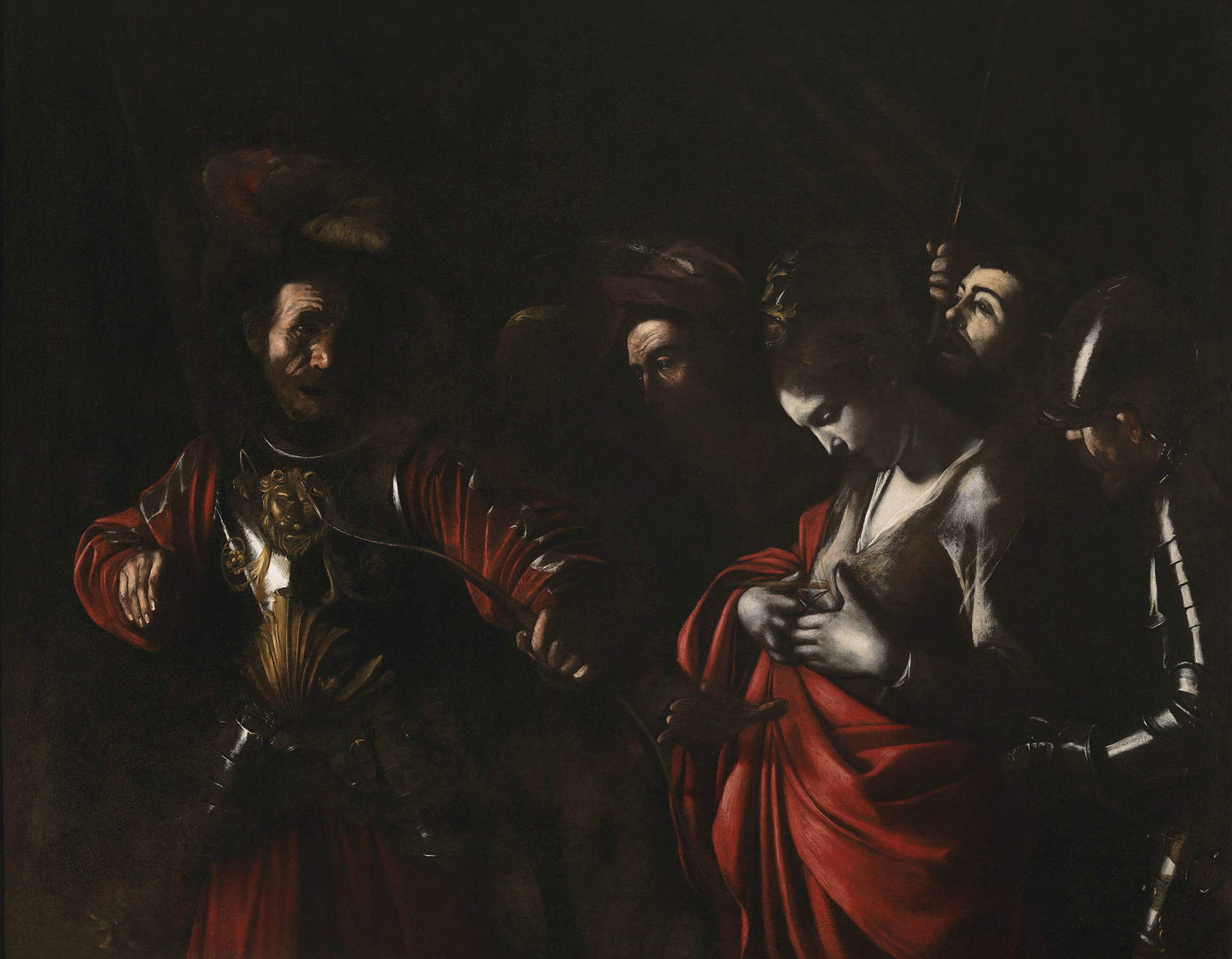
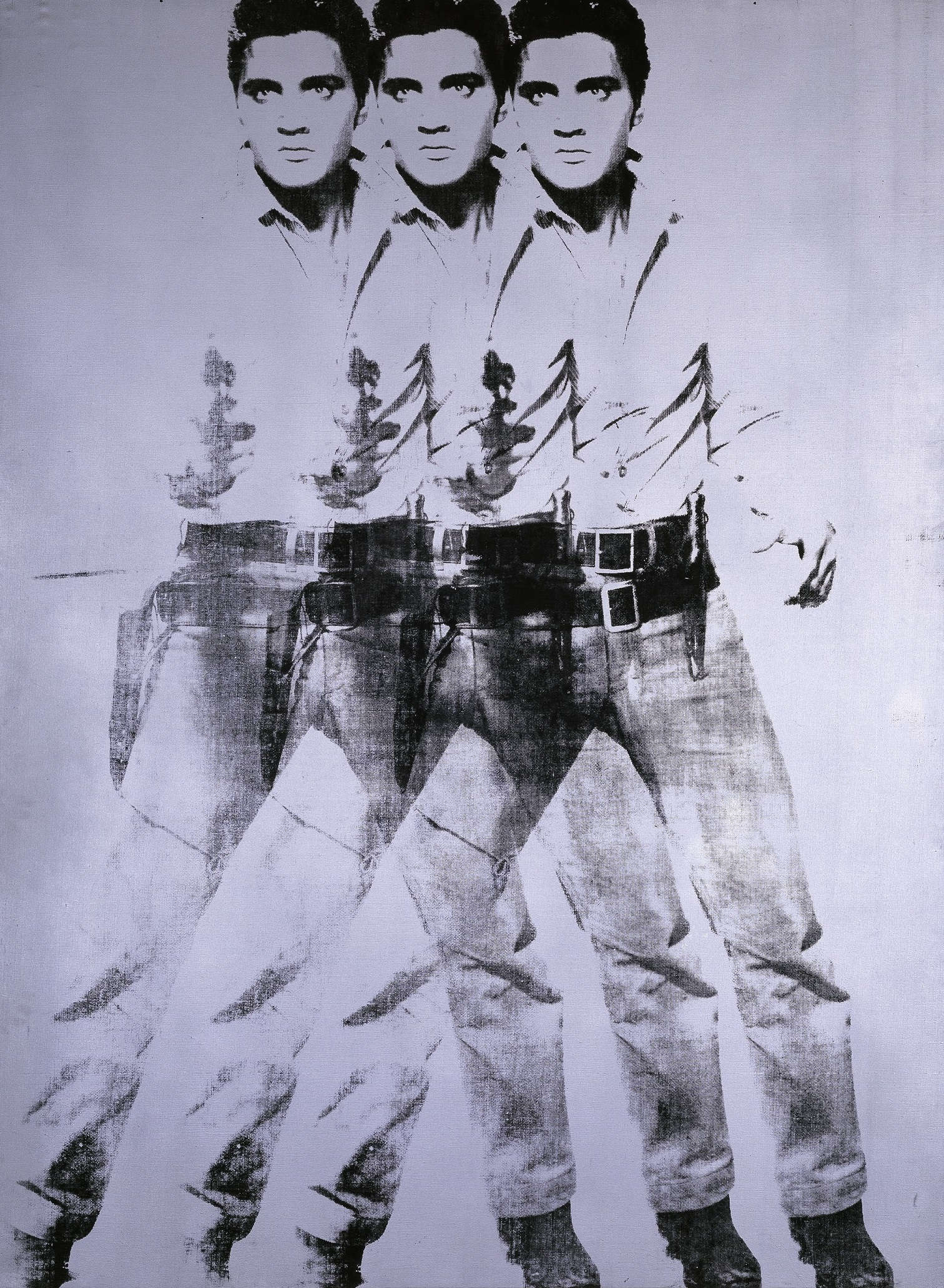

What is the unifying characteristic of the exhibitions mounted in Gallerie d’Italia’s venues?
Originality is our beacon and guides our activity. For example, the photographer currently hosted in Turin did a new project on our commission, plus I challenge anyone in Italy to do a study project on a character like Sir Hamilton, and I also remember the recent exhibition on Felice Carena, which was based on a very refined cultural work, aimed at shedding light and putting back into the center of criticism-which actually happened-a very great painter who had been totally neglected until then. The Vicenza exhibition itself began with a study of a work that, before our research, was attributed to another artist, Agostino Fasolato, and is now traced back to Bertos. The intention is always to work around new, scholarly projects that have never been bought on the market as a stop on a journey made in Italy or Europe.
Have you had a chance to conduct recent satisfaction surveys among visitors to your museums? If so, what results did they yield?
We did an appreciation survey a few years ago, and the responses were overwhelmingly favorable, although we never made them public. I might add that we are “under siege” by requests for partnerships and shared initiatives, and so I have the distinct feeling that appreciation is very high... The numbers are constantly growing, and moreover we are being asked to open Gallerie d’Italia in every place in the country.
But in the Gallerie d’Italia in Milan, Turin and Naples, there is more than just art: in fact, spaces dedicated to catering have been implemented. How important is it to offer a high-quality food&beverage proposal inside a museum?
We are very satisfied with the restaurants inside Gallerie d’Italia, and we believe that the experience of visiting a museum cannot be separated from a moment of contact with another form of Italian excellence, namely food and wine creativity. Then when there are young chefs like Alessandro Negrini and Fabio Pisani in Milan, Giuseppe Iannotti in Naples and Christian Costardi in Turin, creativity, fun and quality become key concepts. We are also proud to have reopened the San Carlo café in Turin, a historic and important café for the city. Obviously, you have to remain able to speak to all audiences, and we have found a formula that I think meets this need.
Thinking instead of other banks, what could they do to make their art collections better known and valued by the public?
Look at what Intesa Sanpaolo is doing!
Warning: the translation into English of the original Italian article was created using automatic tools. We undertake to review all articles, but we do not guarantee the total absence of inaccuracies in the translation due to the program. You can find the original by clicking on the ITA button. If you find any mistake,please contact us.



























